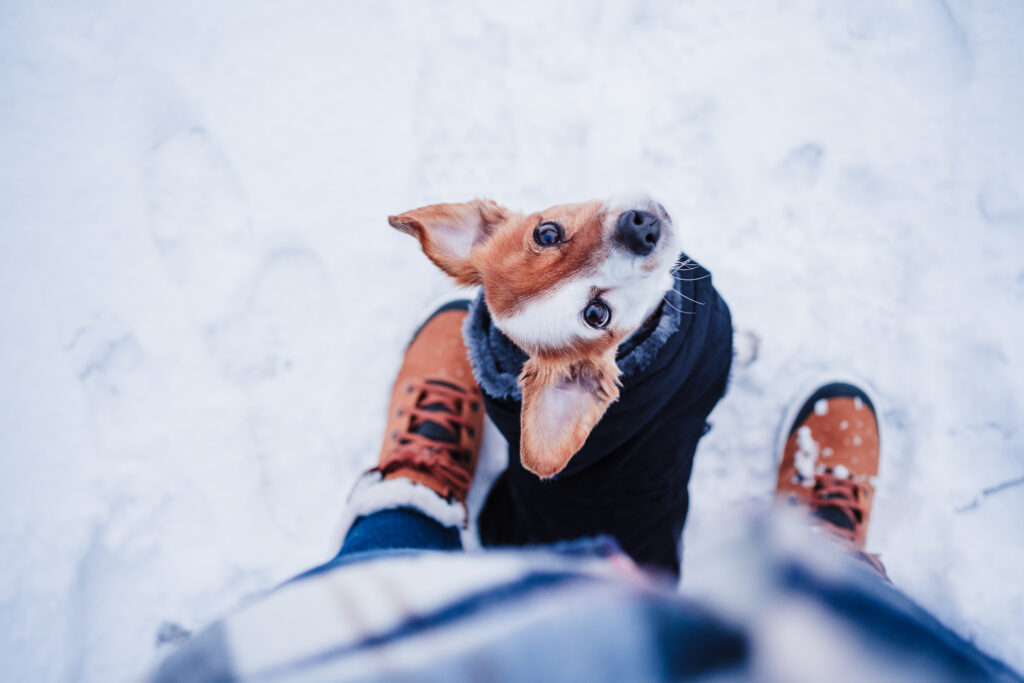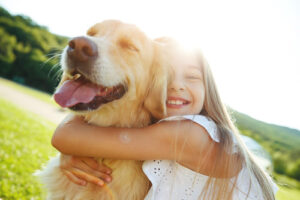Walking your dog during the winter months can be a refreshing experience for both you and your pet, but it comes with unique challenges. Here we aim to guide you on how to walk your dog safely in the winter, ensuring both you and your pet enjoy these chilly outings. If you have specific concerns or need to make an appointment, our team at Taconic Veterinary Center in Cortlandt Manor, New York, is always ready to help. Just call us at (914) 737-2437 to speak with our team.
Understanding Winter Risks for Dogs
The winter season brings various risks for pets and humans alike. Here are the most important factors to keep in mind when planning walks with your pet.
The Cold Weather
Just like humans, dogs can feel the effects of cold weather. Smaller breeds, puppies, and senior dogs are particularly sensitive to lower temperatures. Signs that your dog might be getting too cold include shivering, lethargy, and reluctance to keep walking. It’s important to understand your dog’s limits and monitor them for these signs during walks.
Ice and Snow
Slippery ice and deep snow can pose risks to both you and your dog. Dogs can slip and injure themselves on ice, and walking through heavy snow continuously can put your pet at an increased risk for hypothermia. Also, snow and ice can hide hazards like sharp objects or chemicals that might hurt your dog’s paws.
Road Salt and Antifreeze
In winter, roads and sidewalks are often treated with salt and chemicals like antifreeze, which can be toxic to dogs. These substances can stick to your dog’s paws and fur, and if ingested while they groom themselves, can lead to health issues.
Preparing for Winter Walks
A winter walk with your pet requires some preparation. Here are some steps to ensure the experience is enjoyable and comfortable for your dog.
Choosing the Right Gear
Equipping your dog with the right gear is essential for safe winter walks. Dog coats or sweaters are beneficial, especially for breeds with short/fine hair. Well-fitting dog boots can protect your pet’s paws from cold surfaces, salt, and harmful chemicals. If boots aren’t an option, paw balm can offer some protection.
Visibility and Safety
Winter days are shorter, and you might find yourself walking in the dark. Using reflective gear or LED collars can make you and your dog more visible to drivers. Always keep your dog on a leash during walks to ensure they don’t run onto icy roads or get lost in the snow.
What to Do During the Walk
Be extra attentive to your dog’s needs during winter walks.
Monitoring Your Dog’s Body Language
Keep an eye on your dog’s body language. If they seem uncomfortable (reluctant to walk, stepping gingerly), it might be time to head home. Always be ready to cut the walk short if your dog shows signs of distress or discomfort.
Adjusting Your Route
Choosing the right path is essential. Avoid areas with heavy traffic or those heavily treated with road salt. Quieter, snow-covered paths can be a safer option, but make sure the snow isn’t too deep for your dog to walk through comfortably.
Regular Paw Checks
During the walk, check your dog’s paws regularly for signs of cold injury like cracked pads, or accumulation of ice and snow between their toes. Wipe their paws with a warm cloth after the walk to remove any salt or chemicals.
Post-Walk Care
After each walk, thoroughly clean and dry your dog’s paws, as well as their belly and legs if they’ve been in contact with snow or treated surfaces. This helps prevent skin irritation and ingestion of harmful substances.
Post-walk, observe your dog for any signs of discomfort or unusual behavior. If you notice anything concerning, like the persistent licking of the paws, lethargy, or refusal to eat, contact Taconic Veterinary Center for advice.
Sometimes, it’s best to skip the outdoor walk altogether. Extreme cold, heavy snowfall or icy conditions can be unsafe for both you and your pet. During these times, consider indoor activities to keep your dog active and entertained.
Get In Touch for More Pet Care Advice
At Taconic Veterinary Center, we are here to support you in taking the best care of your pet. If you have any questions about winter dog care, or if you want more information tailored to your pet’s specific needs, please call us at (914) 737-2437.





